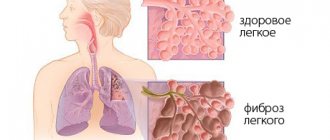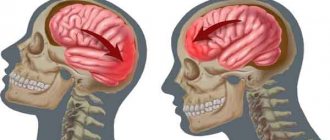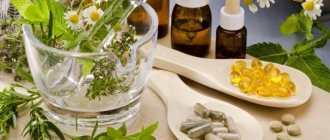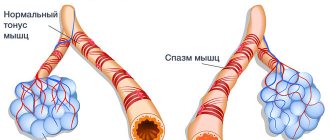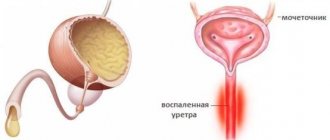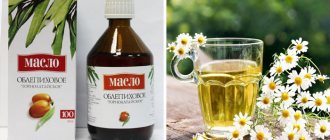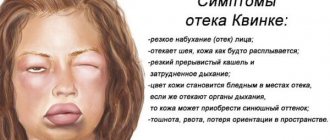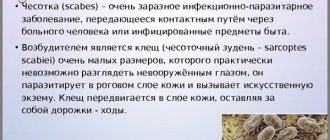Treatment of essential tremor folk remedies
Essential tremor is a pathology of the nervous system, in most cases caused by heredity. The main symptoms of the disease are trembling of the head and upper limbs, tongue and voice, chin, and, less often, other parts of the body. In this case, tremor may be accompanied by other signs indicating problems with the nervous system. Typically, the pathology manifests itself in people whose age exceeds 30 or 40 years. The disease itself does not pose an immediate danger, but it can significantly complicate both professional activities and the social life of an individual. Next, we will look at essential tremor - causes, symptoms and treatment, both traditional and folk.
Symptoms of the disease
Symptoms of the disease depend on the form of the disease. Basically, it can be determined by the following characteristics:
- hand trembling;
- sometimes the head, tongue, vocal cords tremble;
- increasing the amplitude of movement when performing actions;
- muscle tone increases;
- torticollis;
- increased trembling during stress and emotional shock.
Essential tremor can be confused with other diseases, so only a specialist can make an accurate diagnosis and prescribe treatment methods.
Provoking factors
Research shows that essential tremor of the hands and other parts of the body can develop under the influence of two main reasons. These include:
- Heredity, when “wrong” genes are passed from ancestors to children. As statistics show, if pathology is present in the older generation, then in 50% of cases a child is born into the family with the disease in question. In this case, the disease more often manifests itself in older patients, although it has no age restrictions.
- Distorted interaction of brain structures - the cerebellum, red nuclei and brainstem - regulating the coordination of movements.
In addition, a negative manifestation can be caused by certain diseases, the list includes:
- Parkinson's disease, in which there is a slow death of brain cells;
- brain tumors;
- hyperparathyroidism, characterized by impaired functioning of the thyroid gland;
- presence of thyrotoxicosis;
- head injuries that cause damage to brain cells;
- renal, liver failure;
- various intoxications, poisoning with pharmaceuticals.
Symptoms of pathology
The main symptom of the pathology is hand tremors; it can occur when trying to maintain a certain posture (postural tremor), when performing various purposeful movements (intentional tremor), as well as in a calm state. Most often, the pathology is accompanied by the first two types of tremors. Typically, trembling develops symmetrically, although unilateral localization can also be observed, and in the initial stages of development, the problem manifests itself only in case of tension in the hands. Over time, even subtle movements can be accompanied by trembling; negative symptoms also appear in complete rest.
There are a number of factors that can enhance negative signs:
- Constant lack of sleep and fatigue.
- Increased emotional stress.
- Attempts to get rid of tremor by force of will.
- Abuse of coffee, rich teas, energy drinks.
- Long stay in the cold.
What is typical is that trembling occurs only in the active phase, and when a person is in a state of sleep, it disappears.
Separately, the effect of alcohol-containing drinks should be considered - after taking them, the symptoms are significantly reduced and may disappear, but after a day they reappear, and may manifest themselves more clearly. Such exposure can provoke addiction to alcoholic beverages. Gradually, with the further development of the disease, the pathological process affects other areas, which causes other symptoms:
- with tongue tremor, difficulty speaking occurs - dysarthria;
- in 60% of cases, patients experience facial twitching of the lips, forehead and temples, eyelids and cheeks;
- involuntary head movements occur in half of all cases; they consist of nodding and swaying to the sides;
- if the duration of the pathology exceeds 10 years, trembling of the larynx and vocal cords appears, which manifests itself in a change in timbre and slurred speech;
- Even tremor of the diaphragm may occur - since it is the main respiratory muscle, if it is damaged, the respiratory rhythm is disrupted and speech changes;
- In 20% of cases with a long course of pathology, twitching of the legs may be observed, which are not so pronounced as to make movement difficult.
Eastern remedies
There are excellent methods of combating limb tremors in eastern countries. You can safely use their folk remedies for proper treatment. In the East there is a special method of therapy. It is called “Ayurveda”. Not many people know about it, but you can easily see the effectiveness of the method when you try it for tremors.
There is a great exercise that absolutely anyone can do. In the future, this will help you relax in an anxious situation. Fingers and hands interact in it. The first step is to connect the thumb with the index finger. And then everything is simple. You need to carefully connect the other fingers. Do this exercise in any free time, and hand tremors will go away. Symptoms, causes and treatment are described in detail above.
Eastern practice requires increased attention to breathing exercises. In this case, a person should be treated with a wide variety of oriental herbs. The end result will surprise you, because not only will your hand tremors go away, but you will feel much better overall. The biggest advantage is that along with Eastern practice you get complete freedom of spirit. Therefore, you should take eastern folk remedies seriously, as a result you will become a completely different person.
Traditional therapy of pathology
When considering how to treat essential tremor, it should be noted that effective therapy must be comprehensive. The disease responds quite well to pharmaceutical drugs, especially when treatment is started at the initial stage of pathology development .
Hand tremors are treated with:
- sedative pharmaceuticals;
- vasodilators;
- anti-seizure medications;
- anti-sclerotic drugs;
- If signs of depression appear, antidepressants are prescribed for stabilization.
When hand tremors are accompanied by head tremors, the task becomes significantly more complicated. Treatment begins with taking medications with anticonvulsant, antiepileptic properties, beta blockers, and drugs are prescribed to normalize the functionality of the heart muscle and to stabilize metabolic processes in nerve brain cells. It should be understood that self-medication is inadmissible - all pharmaceuticals should be prescribed by the attending physician, focusing on the patient’s age group and concomitant pathologies.
In cases where long-term drug treatment does not produce the expected positive effect, the disease is actively progressing and makes the life of the victim difficult, surgery and stereotactic thalamotomy may be prescribed.
Sometimes symptoms may disappear after using therapeutic massages, hypnotic sessions, and acupuncture.
When prescribing physiotherapy, it is recommended to:
- A special therapeutic and physical training complex that allows you to reduce the level of tremors.
- Gymnastic exercises in nature.
- Do aerobics or dance.
- Do exercises that stimulate fine motor skills.
- Take walks in the fresh air every day.
Traditional treatment - the most popular recipes
Drug therapy can be supplemented with folk remedies, which should be used after prior approval from the attending physician. Let's consider the most popular traditional medicine recipes that allow you to treat essential tremor using herbal ingredients:
- Tansy inflorescences are used as a sedative - they must be chewed slowly and thoroughly, swallowing only saliva, getting rid of the cake. A single serving is from three to five peas.
- To relieve emotional stress, use the following remedy: combine three lobes of motherwort with two lobes of valerian root, add two lobes of hawthorn fruit, add one lobe of mint, chamomile flowers, and dried dried fruit to the mixture. All components are mixed, then pour 500 ml of water brought to a boil into two large spoons of the medicinal mixture and cook over low heat for five minutes. Then the composition is poured into a thermos and kept in it for 90 minutes. After filtration, you need to drink the decoction before meals in the morning, evening and lunch hours. After taking a dose, the volume of which reaches half a cup, at least 30 minutes should pass before eating. The duration of the therapeutic effect is 30 days, after which a ten-day break is taken and, if necessary, the treatment is repeated.
- It is recommended to drink soothing herbal teas. To prepare the drink, mix two shares of mint with the same amount of three-leaf watch, add one share of hop fruits, and the same amount of crushed valerian root. After mixing the components, take two large spoons of the mixture and brew them for 60 minutes with 500 ml of boiled water. The product is drunk three times a day, the volume of each serving is ½ glass.
- You can mix two shares of crushed valerian root with five shares of caraway fruits, add three shares of chamomile flowers to the mixture. The remedy should be brewed in the same way as in the previous recipe, and the medicine should be drunk in the morning and evening hours, a single dose is 0.5 cups.
Decoctions and tinctures that can be combined with medications
Herbal tincture
- 200 grams of rosehip roots;
- 200 grams of cyanosis herb;
The components of the tincture can be either fresh or dried (or the percentage ratio can fluctuate - 25% dry material to 75% fresh or vice versa). If you take fresh raw materials, you should wash them. Next, the ingredients are mixed and chopped with a knife or mixer. Take five (5) tablespoons of “porridge” into a container (glass jar, small saucepan with a lid). Mix it with half a liter of vodka. We isolate from external factors and sunlight in a warm place for 21 days. During this period, stir. After the expiration date, the container with the “potion” is filtered, and the remainder is squeezed out.
The tincture is taken 1 (one) teaspoon three times a day before meals. It is recommended to drink it with water. Forty-five (45) days is the requested amount of time to complete the course. Break - 30 days. Hide the “potion” in a cool place (never in the refrigerator!).
Vodka drops made from valerian, motherwort and peony
- 300 grams of valerian root;
- 300 grams of peony root;
- 300 gamma of motherwort herb;
- 1 liter of vodka.
Rinse the ingredients under warm water. You can also use dried ingredients (in this case they are not washed). Peel the roots of peony and valerian, and then chop them together with motherwort herbs. Mix the purchased vinaigrette well. For further actions, you will need to pour 6 tablespoons of the healing compound into 1 liter of vodka.
The infusion is stored in a dark room and at a temperature that does not exceed 18 - 2 0 degrees Celsius. Don't forget to stir! At the end of the 20-day period, the herbal mixture is filtered and the grounds are squeezed out.
Indications for use: three times a day, an hour before meals, drink a glass of tincture diluted with purified water - 20 drops per 1/3 glass of water. Use the soothing mixture with breaks per month.
A decoction of valerian, motherwort, peony, cyanosis and motherwort
- 300 grams of valerian root;
- 300 grams of peony root;
- 300 gamma of motherwort herb;
- 300 grams of cyanosis root;
- 0.5 liters of water.
The ingredients mentioned above are washed and cleaned. Afterwards, grind it in a way convenient for you (with a knife, mixer), and mix thoroughly. Scoop out 1 tablespoon of assorted herbs and place in a saucepan (any container with a lid) with water. The “potion” is boiled over moderate heat for 20 minutes. After removal, cool for an hour and strain diligently.
You should take 100 grams three times a day an hour before eating.
Decoction of lemon balm, mint, astragalus and hawthorn
- 300 grams of lemon balm herb;
- 300 grams of mint herb;
- 300 grams of astragalus herb;
The decoction parts are taken mainly in dried form, but a choice of fresh ingredients is also possible. In this case, they must be washed. Next, the raw materials are crumbled with a knife, but very finely, and then carefully mixed. The resulting mixture, 1 tablespoon in volume, is filled with water and placed on the stove. After boiling, the heat must be reduced. The drink simmers for at least 15 minutes (do not remove the lid during this time). To make the medicinal brew work better, leave the cake for another half hour and only then strain. You need to drink a vasodilator cocktail three times a day before meals in the amount of 100 grams.
Propolis tincture
To prepare the tincture you will need a glass container. In it, mix 50 grams of bee glue with 0.5 liters of vodka. Leave at room temperature for 14 days. During this period of time, it is necessary to stir the mixture at least three times a day. After the expiration date, it is necessary to pour the alcoholic drink into a clean container, straining through cheesecloth. The adhesive resin can be used twice.
Recipe for use: three times a day before meals, 25 grams of the product. And then drink a glass of water.
St. John's wort drink
St. John's wort drink
At the first stage, pour water into a suitable container and bring to a boil. Grind the St. John's wort herb in a mixer or cut it with a knife. For further steps you will need a saucepan or thermos
(a container with a tight-fitting lid), where 60 grams of the plant is covered with hot water. Leave the infusion for 8 hours, then filter with gauze. Discard the remaining herbs without squeezing them out.
The product produced must be divided into four equal parts. You will get approximately 180 ml each. This amount should be drunk 2 times a day 30 minutes before eating. Among the folk methods of combating illnesses is taking baths with healing herbs. When taking tinctures and decoctions, herbal bathing increases the healing effect.
Bath with chrysanthemum
Bath with chrysanthemum
To prepare a chrysanthemum bath you will need the following ingredients:
If the raw materials are fresh, chrysanthemum flowers are inspected for insects and then washed with water. If they are dried, there is no need to rinse them.
Bring water to a boil in a saucepan and remove from heat. Next you need to chop the plant (don’t be too zealous about cutting, you just need to let the flower ooze) and collect it in gauze and tie it. A knot with flowers - place it in a container of water and leave for 30 minutes.
Having filled the bath with water at an acceptable temperature for your body, take a saucepan with a fragrant brew and add it to the main volume. Throw a gauze knot there. Soak for no more than a quarter of an hour (15 minutes). Do the procedure no more than 3 times a week.
Video - Treatment of hand tremors in Israel
Video - Treatment of hand tremors with folk remedies. Psychological attitude
How to treat hand tremors at home.
We are used to seeing shaking hands in old people, although today tremors are not always a sign of old age; even a child’s hands can shake. If the palms of an infant are shaking, this is not considered a pathology, it’s all about unformed nerve connections. Senile tremor is also quite acceptable. In addition, hands may shake from fear or excitement; there are many other reasons for which tremor is considered physiological. But, unfortunately, there are also many diseases (in most cases neurological) in which tremor is one of the main symptoms. In this article we will try to understand what hand tremor is, how and why it appears, how to cope with it independently and under the supervision of a doctor.
Traditional medicine for essential tremor - other recipes
There are other recipes for treating essential tremor using various plants that have a sedative, calming effect on the body:
- Often, mint alone is used to prepare soothing teas - place two large spoons of the plant in a container with 500 ml of boiling water, boil over low heat for 15 minutes, pour the product into a thermos and leave. The prepared product should be drunk for three days, before meals, three times a day. After taking the medicine, at least 30 minutes should pass before eating. The duration of therapy is 30 days, followed by a ten-day break, after which the course is repeated.
- It is necessary to collect the inflorescences of the Tibetan lofant and dry them, and then use them to prepare healing tea. Two large spoons of the plant are crushed, poured with boiling water in a volume of 300 ml, kept for an hour, filtered. You need to drink the drug up to four times a day, one third or half a glass.
- You can mix equal parts of rosehip root, St. John's wort leaves, lemon balm, rosemary, mint, and add the same amount of cyanosis, motherwort, and hop fruits. After mixing the components, the mixture in the amount of five large spoons is poured into a bottle of vodka, kept warm and dark for 21 days, shaking regularly. Then the tincture is filtered by squeezing out the cake. The product should be stored in a cool, dark place. The prepared drug is taken before meals in the morning, afternoon and evening. A single dose is 10 drops, which should be taken with water. The duration of treatment is one and a half months, then a 30-day break is taken. Such courses are conducted at monthly intervals throughout the year.
Essential tremor is a disorder of the nervous system. The disease does not pose any danger, but has a lot of unpleasant symptoms. A patient with pathology cannot even drink water normally or read a book.
This all causes discomfort and makes life much more difficult. With the disease, tremor of the tongue, head, and voice may occur. Most often, the disease manifests itself between the ages of 30 and 40 years .
Essential tremor can be inherited. If the first symptoms appear, you should not ignore them and consult a doctor. A neurologist will examine you and order tests to find the cause of your essential tremor.
Essential tremor (Minor syndrome): causes, dangerous symptoms and treatment methods – About health
- Essential tremor (Minor's disease), symptoms, causes and diagnosis
- Essential tremor: symptoms and effective therapy
- Signs of essential tremor and treatment of hereditary pathology
- Essential tremor (Minor's disease): what it is, causes, treatment, symptoms, features of hand and head tremors
Essential tremor (or Minor's disease) is the most common type of tremor. Its occurrence implies a hereditary factor. Its main manifestation is postural (an attempt to hold a pose) trembling, most often of the hands.
Often combined with tremor of the head and/or facial muscles, tongue, lips, ligaments, legs, torso, diaphragm. Most often, postural tremor is combined with intention tremor (for example, increased tremors when trying to thread a thread through an eye). Most often occurs as a monosymptomatic disease (i.e.
the only symptoms are trembling), but it happens that it occurs together with spastic torticollis, blepharospasm (spasmodic closing of the eyelids).
Symptoms of essential tremor
For essential tremor, the most characteristic is small- or medium-amplitude (up to 10 Hz) hand tremors with normal muscle tone. In almost all sufferers, hand tremors are clearly expressed during static tension, maintaining a certain posture (postural tremor).
Rest tremor (characteristic of Parkinson's disease) is much less common. Essential tremor is characterized by trembling that accompanies every purposeful movement (kinetic tremor), persisting when approaching the target.
Sometimes patients with ET change their handwriting; the letters become large, pointed, angular, with wavy contours, often not connected to each other. Hand tremor in most patients appears before trembling in any other localization and in some it remains the only symptom of the disease from several months to several years.
In almost all patients, trembling develops suddenly, initially appearing only with excitement. More often it appears in both hands at the same time. Less often, one hand begins to tremble, and more often - the right hand (for left-handers, the left hand). Trembling of the other hand occurs at intervals from several months to several years.
Head trembling is observed in half of sufferers. In some patients, essential tremor debuts with a shaking of the head, which remains isolated for several years, and is later joined by a tremor of the hands or other localization.
More often o-tremor of the head, less often one can observe “yes-yes” tremor, as well as rotational (circular) and diagonal variants of head tremor. In a third of patients, essential tremor is characterized by a trembling timbre of the voice.
As it progresses, signs of cerebellar dysfunction often appear: intention tremor, walking disturbances, unsteadiness of gait, and slowness in voluntary movements.
Many patients with essential tremor pay attention to the fact that trembling is more pronounced in the morning. Alcohol suppresses tremors for 2-4 hours, but the next day the tremors intensify. It has been noted that many of the patients are characterized by high intelligence and professional achievements.
Causes of essential tremor
Without going into details, the physiology of the occurrence of pathological tremors can be described as follows: when the central nervous system is damaged, the so-called “central oscillators of tremor” acquire a dominant role - these are groups of nerve cells that form in the brain and are capable of generating independent signals leading to tremor.
These groups of nerve cells develop in the cells of the inferior olive and thalamus. There is also another mechanism associated with the development of intention tremor (purposeful movements).
Its occurrence is associated with a violation of the timeliness of activation and inhibition of opposing muscles (agonists and antagonists, for example, biceps and triceps) when performing voluntary movements. Normally, this superstructure of the tension/relaxation sequence is carried out by the cerebellum.
It also controls targeted movements of the body, using information about the necessary movements from the cerebral cortex - the department that controls all rational human behavior. With cerebellar pathology, the delay of these connections increases, i.e. the necessary muscles simply do not have time to subtly adapt to the necessary circumstances of the movement program.
This results in excessive movement in one direction and then in the other. Thus, purposeful movement ends in shaking.
The development of Essential tremor is caused by a genetically weakened inhibitory mechanism for the regulation of certain brain structures (extrapyramidal and cerebellar), which leads to a violation of the relationship between the rate of relaxation and contraction of muscle fibers.
The thing is that in the brain of a patient with essential tremor the exchange of catecholamines (adrenaline, norepinephrine) is disrupted. With this disorder, the activity of the noradrenergic system correspondingly increases, which leads to increased synthesis of cyclic Adenosine Monophosphate (cAMP) and stimulation of p-adrenergic receptors.
If you reduce the level of p-adrenergic receptors using such a well-known drug as propranolol (anaprilin), a response decrease in the level of cAMP and norepinephrine occurs. In turn, the noradrenergic system returns to normal, unnecessary excitation does not occur and the tremor is significantly reduced (decreased or completely disappears).
Differential diagnosis of various types of tremor with essential tremor
The most important thing is to be able to distinguish one type of tremor from another. Below are some features of the “handwriting” of this or that type of tremor that you need to pay attention to when diagnosing.
Tremor in Parkinson's disease and essential tremor (ET)
- muscle tone in ET remains unchanged, in contrast to rigidity (hypertonicity, hypertension) in parkinsonism;
- posture and gait in patients with ET are not changed, unlike Parkinson's disease;
- ET is typically characterized by a trembling of tension and movement that accompanies every purposeful action and intensifies when approaching the goal. Parkinsonism is characterized by resting tremor, which is not typical for ET;
- In parkinsonism, purposeful movements, on the contrary, suppress tremor;
- Familial cases of Parkinson's disease are extremely rare.
Essential tremor (ET) and torsion dystonia (TD)
- In TD, tremor is rarely the only symptom. As a rule, disturbances in muscle tone are soon observed, leading to changes in movements;
- TD is characterized by the formation of fixed pathological postures, and tremor progresses much less frequently or does not change.
Essential tremor and hepatolenticular degeneration (Wilson-Konovalov disease, WLD)
- the nature of tremor in ET and GLD is very similar, but in patients with GLD, intention tremor (when approaching a target) is much more pronounced, as well as an increase in tremor when holding the arms suspended;
- it is necessary to pay attention to the results of studies of the liver, blood coagulation system, and also take into account mental changes in the form of intellectual impairments occurring against the background of euphoria, which is very typical for the early stages of GLD and is not typical for ET;
- The most important thing in diagnosing DHF is the study of copper metabolism. If the exchange is disturbed (high content in the urine, low content of ceruloplasmin, the corneal Kayser-Fleischer ring is burdened with yellowish-green or greenish-brown pigmentation along the periphery of the cornea), this indicates the probable development of GLD, and not ET.
Essential tremor and multiple sclerosis (MS)
- Even mild manifestations of visual impairment, detected at the onset of MS, are not typical for ET;
- familial forms of MS are an extremely rare phenomenon, in contrast to familial (essential, hereditary) tremor.
Essential tremor and neurotic tremor (psychogenic tremor, PT)
- PT has a higher frequency and lower amplitude in comparison with ET, it is unstable, often disappears when taking sedatives, psychotherapy and autogenic training. In case of ET, such measures are insufficient;
- with ET, after drinking alcohol (after 15-20 minutes), the trembling disappears.
Essential tremor and thyrotoxic tremor (TT)
- TT is characterized by a smaller amplitude and a higher frequency (the opposite for ET);
- in case of Thyrotoxicosis, the decisive factor is the diagnosis of the thyroid gland with an increase in its function, weight loss, tachycardia, insomnia, sympatho-adrenal type disorders (excitation of the nervous system with increased release of adrenaline), changes in hormonal levels. With ET, such simultaneously occurring symptoms are not observed.
Essential tremor and metal intoxication (mercury, manganese, lead poisoning)
- manganese poisoning most often leads to the development of parkinsonism, but not ET;
- With mercury and lead intoxication, along with tremors, other symptoms of central nervous system damage develop, as well as polyneuropathy (damage to the nerve fibers that make up various nerves, including cranial nerves, manifested by symmetrical flaccid paralysis and impaired sensitivity). These symptoms are absent in ET.
These are brief information about the differential diagnosis of clinical forms of tremor with Essential tremor. We hope this article will help you in making a correct diagnosis.
© Yangel Maxim https://.com/psychogenic_tremor
Source: https://zdorvyyes.ru/jessencialnyj-tremor-sindrom-minora-prichiny-opasnye-simptomy-i-metody-lechenija.html
Causes
Most often, the main cause is hereditary predisposition. The disease is transmitted from parents to baby. There is almost a 50% chance that if a person suffers from essential tremor, he will have a child with the same pathology. The disease can occur at any age, but it is often diagnosed in older people. Poor blood circulation in the brain can lead to the development of tremor. The brain stem, red nuclei, and cerebellum may not interact properly, causing the nervous system to malfunction. Trembling may be neurotic in nature.
There are also a number of other reasons that provoke the development of the disease. This could be Parkinson's disease, which causes brain cells to die. Thyroid dysfunction. It may be either a deficiency or an excess of hormones. Consequences of diseases of the biliary tract and liver. Stroke and various tumors in the brain also cause the development of the disease.
Intoxication of the body with drugs leads to pathology. Bruises and brain injuries can provoke not only essential tremor, but also other diseases. In order to avoid any negative consequences, it is necessary to consult a doctor in a timely manner. A neurologist will be able to make an accurate diagnosis and prescribe comprehensive treatment.
Causes of pathology
The causes and treatment of hand tremors are very closely interrelated, but they are all divided into two large groups: physiological and pathological. The physiological group includes a condition where hands shake due to various physiological disorders. Hands may shake due to the influence of some physiological situations. The phenomenon is temporary and does not indicate any diseases or pathologies. Physiological reasons include the following factors:
- excessive excitement, emotionality of a person;
- stress, depression, consequences of emotional stress;
- accentuation of character that occurs with hysteroid psychopathy;
- reaction to any medications;
- abuse of caffeine and strong cigarettes;
- use of drugs, such as amphetamine;
- hypothermia;
- hard physical work.
It is somewhat more difficult to cure pathological hand tremors, because the cause of this condition is most often neurological, endocrine diseases, and chronic poisoning with toxins. The reason that a person’s hands are shaking may lie in the following:
- poisoning with toxic substances (lead, strychnine, carbon monoxide and others);
- chronic alcoholism;
- diabetes mellitus, hypoglycemia;
- dysfunction of the thyroid gland, adrenal glands;
- chronic liver failure, viral hepatitis;
- pathologies of individual areas of the brain;
- heredity;
- Parkinson's disease, Alzheimer's disease, Wilson-Konovalov disease;
- encephalitis tick damage;
- multiple sclerosis;
- anemia.
Before treating hand tremor, it is necessary to find out the true cause of the disease. For example, it is generally accepted that if the pathology is observed in patients over the age of 50, then the hands tremble only due to the development of Parkinson’s disease. Therefore, often a person is not even offered to undergo the necessary examination. This means that it will not be possible to get rid of hand tremors, since the therapy will be ineffective. If the doctor strongly recommends undergoing laboratory tests and finding out what the true causes of the disease are, then treatment will have the desired result.
Symptoms
With essential tremor, symptoms may appear unnoticeable at first. After some time they can become stronger. It is best not to let the pathology progress and visit a doctor on time.
The following signs of pathology are observed:
- Any part of the body may tremble slightly when relaxed and under stress. This can be very noticeable when a person begins to write text.
- The patient may experience trembling of the tongue. This may not be noticeable, but an experienced specialist will immediately identify it.
- A person may shake or nod their head for no reason.
- Muscle tone increases.
- As soon as the patient becomes overexcited or experiences stress, the tremor will become more intense.
- A person can observe how his voice changes.
- It happens that the head is constantly tilted to the side or turned.
- The patient may appear to be chewing or opening their mouth frequently.
If the above symptoms appear, then without hesitation, you need to consult a doctor. In advanced forms, the disease is always more difficult to treat. To do this, you need to seek help from a medical institution in time. In fact, the disease is easily treatable; the main thing is to understand in a timely manner that essential tremor is developing.
Exercises to treat hand tremors
In the fight against trembling hands, it is very effective to do special gymnastics that strengthens the muscles of the hands and improves coordination.
- Clench your hand tightly into a fist, unclench your hand with a sharp movement, repeat at least 50 times for each hand.
- Squeeze the four parallel fingers of each hand into a lock, with the thumbs resting on the pads of each other. Move your clenched thumbs left and right.
- Starting position - as in the previous exercise, thumbs in a free position - they should be rotated one around the other.
- Interlace your two index fingers together, try to stretch your arms, but keep the grip. Repeat the exercise with each finger of your hand.
- Braid three laces into a braid.
- It is very useful to touch the rosary, work with an expander, and play with two large balls from a bearing.
Perform these exercises as often as possible - at least 3-4 times a day. Combined with our recommendations for tremor treatment, you can get rid of annoying tremors in just a couple of weeks.
Hand tremors are a serious symptom, and if you cannot cope with it on your own, there is no need to be afraid and hope that it will go away on its own. The sooner you see a doctor, the more successful and easier the treatment will be. It is better to consult a neurologist or neurosurgeon with this problem. And then tremor will not be able to darken your life, you will eat, apply makeup, write, shave and embroider without problems!
Diagnostics
First of all, the neurologist collects the necessary information about the disease. It will also find out when the symptoms began to bother you, and whether they may be hereditary. Examines the patient's medical record and various chronic pathologies, if any. The specialist must listen to all the patient’s complaints and conduct a neurological examination.
The doctor should refer you for consultation to various specialists, if necessary. The neurologist also checks muscle tone for resistance. Examine all parts of the body for tremors. The specialist must know whether the patient drinks alcoholic beverages.
MRI and CT scans are also performed ; this will help identify various pathologies that are associated with the brain. The procedure is often done with a contrast agent, but a test must be performed before this, as there may be an allergic reaction to the contrast. The study is also done on young children and pregnant girls.
X-rays and electroencephalography may be prescribed. In rare cases, a specialist will refer you for examination of blood vessels in the brain. It is best to consult a doctor promptly, as complications may occur.
What are the types of essential tremor?
There are several types of the disease, and each manifests itself differently. It is worth paying attention to how intense the symptoms appear. This will help avoid serious complications. You should not ignore the symptoms; the sooner treatment for essential tremor is started, the easier it will be to eliminate it.
There are several types of pathology:
- Essential hand tremor is observed in many patients. With this type, muscle contraction occurs during flexion and extension of the limbs. Often this becomes the main symptom of the development of the disease. A person begins to feel a tremor when performing any actions with his hands. At the initial stage, the disease may not manifest itself so clearly. Trembling at rest can occur in older people over 60 years of age.
- Essential head tremor is observed in almost half of patients. This also happens to be the first manifestations of Minor's disease. Tremor manifests itself as shaking or nodding of the head.
- About 60% of people suffer from tremor of facial muscles. The patient experiences tremors in the lips when talking or smiling. Muscle twitching may occur in a calm state. This indicates that the first symptoms of the disease are appearing.
- Tremor of the eyelids and tongue occurs less frequently. The symptoms appear almost imperceptibly, but the patient feels it vividly.
- One third of patients who have had the disease for more than ten years may experience tremors of the vocal cords. Some patients at a young age may also experience similar changes. The voice changes greatly, and speech becomes slurred. The patient may eventually notice that stuttering occurs.
- Tremor of the diaphragm is observed very rarely and manifests itself specifically. An accurate diagnosis can only be made with an x-ray. There is a disturbance in the respiratory system, and speech becomes unintelligible.
- Leg tremors occur in one quarter of patients. A person may not feel any changes, and at first glance nothing is visible. In order to confirm the presence of the disease, it is necessary to conduct an examination.
If the patient notices any manifestations, then you should immediately visit a neurologist. Only he will be able to make an accurate diagnosis and prescribe the correct treatment. It is not recommended to self-medicate, as this may worsen the patient's condition. Even with small signs, it is best to play it safe and seek help from a doctor.
Why the whole body shakes and how to get rid of tremors
Trembling in the body is a common phenomenon that occurs against the background of various pathologies. In medicine, this disorder is called tremor and is defined as involuntary contraction and relaxation of individual muscle groups. There are often cases in which the patient's whole body shakes. In such situations, medical care is required to restore the normal state of the muscles.
- Classification and causes of tremor
- Symptoms and diagnosis
- Therapeutic measures
Classification and causes of tremor
It should be noted that the occurrence of tremors in the body is not always a sign of disease. In addition to the pathological form, there is a natural, physiological tremor.
Factors that provoke natural trembling:
- severe stress;
- exposure to cold;
- sudden temperature change;
- overwork;
- hormone imbalance;
- excessive physical activity;
- pregnancy, menopause.
Physiological tremors are possible in young children. The most common form is chin tremor. This disease goes away on its own in an average of 6–7 months.
In addition, old age is considered a factor provoking tremors. In older people, the nerve centers responsible for muscle function gradually die off. As a result, their tone is disturbed, and tremors of the limbs occur.
The pathological form is trembling throughout the body, manifested against the background of certain diseases.
Pathological tremor is divided into several types:
- Postural. It is characterized by twitching of the limbs, which occurs when the patient holds it in a certain position. Postural tremor occurs mainly against the background of endocrine diseases, poisoning, and increased stress loads.
- Intentional. It appears when performing body movements that require precise coordination. Pathology occurs as a result of multiple sclerosis, skull injuries, cancer, intoxication due to alcoholism, toxic substances, thyrotoxicosis. Intention tremor also occurs with vascular pathologies, in particular against the background of a stroke. It is one of the forms of kinetic tremor (occurs during movements).
- Rubralny. It is characterized by a combination of symptoms characteristic of postural and kinetic tremors. It usually occurs as a result of traumatic brain injury, especially with lesions of the midbrain, as well as with oncology, stroke, and Parkinson's disease.
- Rest tremor. It is a trembling that subsides when the patient makes certain body movements. The patient begins to become cowardly when he is at rest. Characteristic of Parkinson's disease, pathologies with paralysis, hyperkinesis accompanied by tics.
- Psychogenic. Occurs against the background of severe stress, psycho-emotional shocks, neurotic disorders, in crisis or extreme situations. The intensity of the trembling depends on how nervous the patient is. If you distract him or calm him down, the trembling goes away.
Thus, there are many forms of pathological tremor, which differ in the mechanism of development, clinical picture, and methods of therapy.
Symptoms and diagnosis
Tremor is a pronounced pathology, so it does not go unnoticed by the patient. The intensity of the tremors depends on numerous factors. In most cases, patients have shaking limbs and facial muscles. Trembling throughout the body is much less common, but may indicate more serious illnesses.
Signs of pathological tremor:
- the appearance of tremors at rest;
- inability to perform activities of daily living (eg, holding a spoon, tying shoelaces);
- the occurrence of intense tremors after taking alcohol or medications;
- impaired fine motor skills of the hands;
- paroxysmal nature of the pathology;
- increased vibrations when holding a certain position;
- violation of general coordination of movements.
To prescribe an effective medicine for tremor, its cause is first determined. For this purpose, a comprehensive diagnosis is carried out, which includes both laboratory and instrumental examination methods.
Diagnostic procedures include:
- study of anamnesis;
- MRI and CT scan of the brain;
- cardiogram;
- Ultrasound of the heart;
- encephalography;
- general urine and blood tests;
- neurological examination and functional tests.
Treatment is prescribed based on the results of a diagnostic examination. This takes into account the individual characteristics of the clinical picture, the condition and age of the patient.
Therapeutic measures
To get rid of tremors, various treatment methods are used. First of all, the patient needs to limit the consumption of stimulant drinks. These include alcohol, energy drinks, coffee and products containing caffeine.
The main method of therapy is taking anti-tremor tablets. They are prescribed according to the clinical picture. Possible contraindications and side effects are taken into account.
- Sedatives (“Novo-Passit”, “Persen”, “Fitosed”).
- Tranquilizers (Frisium, Lorazepam, Valum, Phenazepam).
- Drugs that enhance nerve conduction (Phenelzine, Neptazan).
- Anticonvulsants (“Acediprol”, “Primidon”).
If tremor appears due to poisoning, it is recommended to detoxify the body. Often patients suffering from alcoholism shake after drinking. This is a consequence of a hangover and a sign of liver dysfunction. In addition to giving up alcohol, you need to take sorbents, hepatoprotectors, and a special diet.
At home, therapeutic exercises and special exercises are recommended. The complex is prescribed to the patient individually, depending on the nature of the disease. The training frequency is 3–5 times a week. It is recommended to combine physical therapy with other procedures: massage, electrophoresis, contrast shower (in the absence of contraindications).
It is recommended to include in the diet foods enriched with calcium, magnesium, and B vitamins. Among non-traditional remedies, you can take tinctures of sedative herbs (hawthorn, motherwort), and mint tea.
Treatment of tremor is a complex process carried out using medications, physiotherapy and traditional medicine.
Treatment
Essential tremor is treated to reduce shaking and slow the progression of the disease. Therapy can last for years and include medications, massage treatments, and acupuncture. The patient should avoid stressful situations and physical activity.
The following medications are used to treat essential tremor:
- Beta blockers Propanolol give positive results in therapy. The drugs are used for a long time, and blood pressure must be monitored.
- Anticonvulsants Clonazepam and Primidon help cope with essential tremor.
- Pyridoxine contains vitamin B6, and this makes it possible to stop the development of the disease. As a rule, the drug is given intramuscularly, and treatment lasts about a month.
- Tranquilizers are used to eliminate anxiety that leads to tremors.
- Small dosages of Botulinum toxin help with trembling of the head and vocal cords. Treatment can take up to six months.
Before using medications, you must read the instructions. Many drugs have a number of side effects and contraindications. If you take medications on your own, this can only worsen the patient’s condition. Surgery may be prescribed, but this is rare. If medications do not help and the symptoms become more intense, then the specialist is forced to perform surgery.
Essential tremor is well treated with physical therapy . Physical therapy develops muscles and fine motor skills. Finger gymnastics and work with various small objects are carried out. It is necessary for physical exercise to be carried out on a regular basis, only then will there be results.
Contrast showers, acupuncture, massages, and hirudotherapy can be used. These procedures can only temporarily improve the patient’s condition; they are carried out in courses. If the disease is in advanced stages, then various drugs should be used.
Drug treatment for advanced forms:
- The anticonvulsant drug Gabapentin is used if other drugs do not help. This medication is well tolerated, but side effects may include slurred speech, nausea, and fatigue.
- Topiramate also has an anticonvulsant effect and gives a positive result in the treatment of Minor's disease. People with kidney stones should stop taking the medication. Elderly people should take the drug with caution, as their memory impairment may begin to progress.
- The antidepressant Mirtazapine has a number of side effects. Dry mouth, excess weight, nausea, and constant urge to urinate may occur.
- Botulinum toxin injections have a positive effect in the treatment of essential tremor of the head, hands, and voice. There may be a side effect in the form of weakness in the muscle where the drug was injected.
It is prohibited to use medications on your own, as they have a number of contraindications. It is best not to ignore the symptoms, as this may lead to the disease becoming more advanced. Then it will be more difficult to cure essential tremor. If conservative therapy does not bring a positive result, then the specialist may prescribe surgery.
Treatment methods for hand tremors
Patients are often concerned about what to do if their hands are shaking, what methods can be used to combat this condition of the body. Today, medicine knows many ways and methods that can help get rid of the shaking condition.
- Surgery. An effective method, but used very rarely due to the difficulties in performing the operation.
- Diet therapy. This method is effective in treating physiological hand tremors when it appears due to the abuse of caffeine, thiamine, and fatty foods. To cope with the disease, sometimes it is enough to exclude from the diet foods that cause overstimulation of the nervous system.
- Apitherapy - treatment with bees. The method sometimes gives good dynamics and helps to get rid of the condition in which hands tremble. However, modern experts regard this method of treatment with some doubt.
- Hirudotherapy - treatment with leeches. The effectiveness of this method is approximately the same as with apitherapy.
- Hydrotherapy is treatment with water. Unlike the previous two techniques, hydrotherapy is a very common and effective way to treat tremors. Patients are shown calm swimming in pools, ponds, and contrast showers.
Some methods of such treatment are suitable for use at home.



